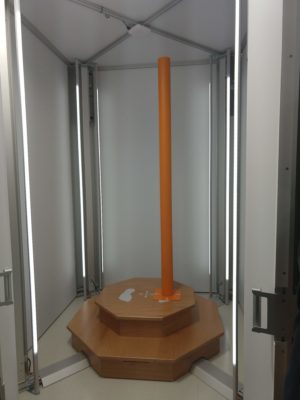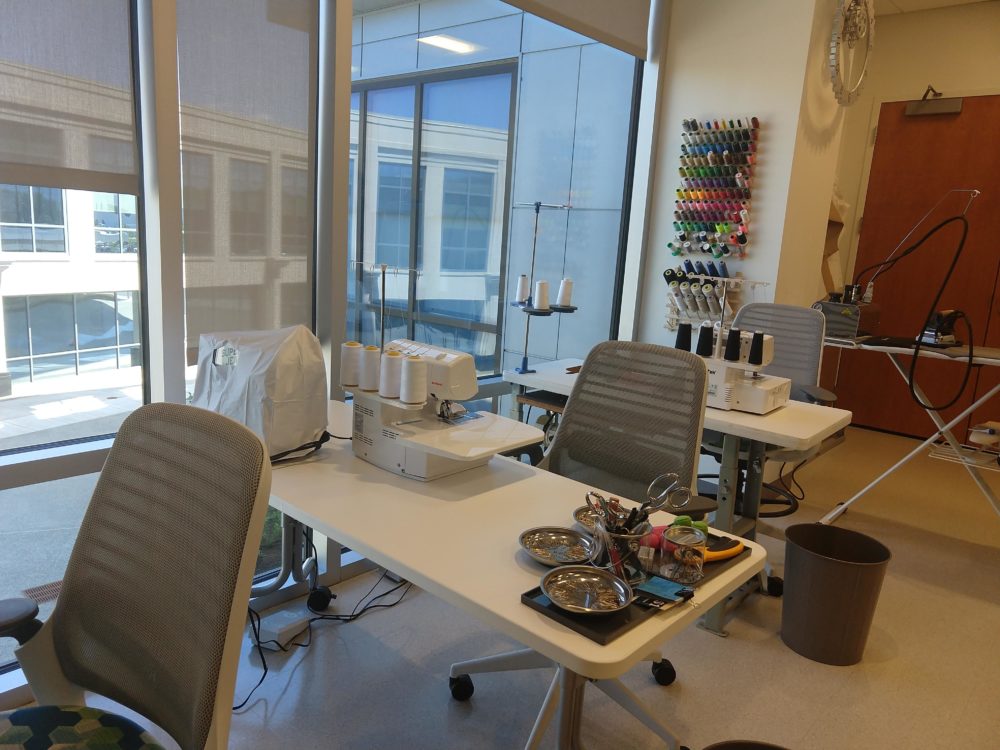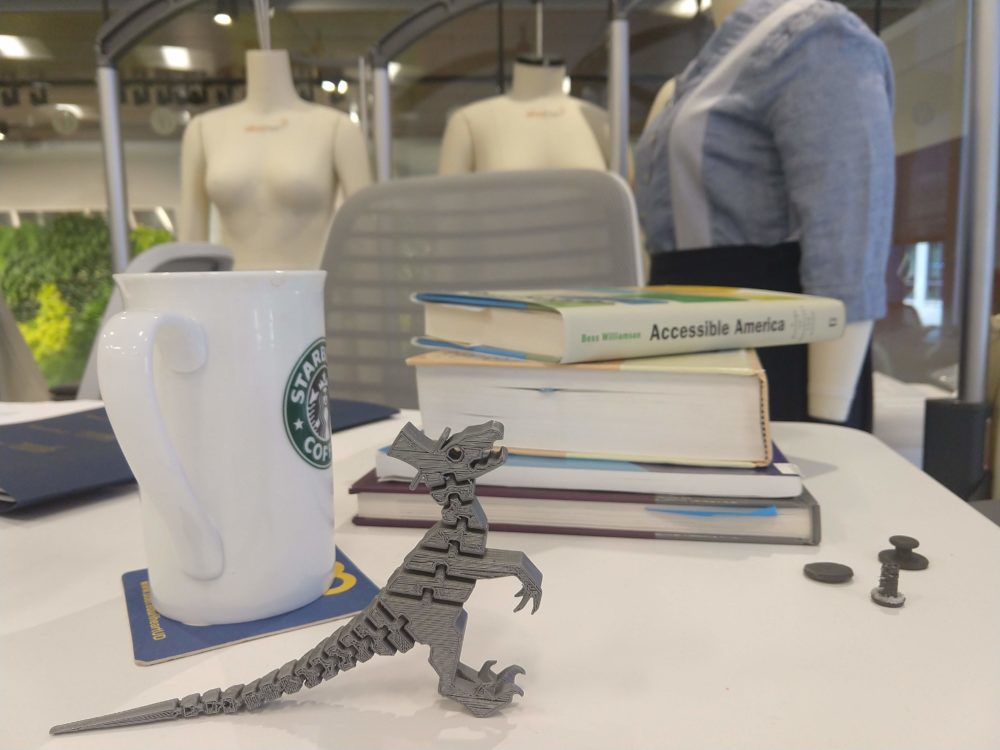If you’re a fan of the Philadelphia 76ers, you’ve probably seen one of the projects developed in the University of Delaware STAR Campus’ Innovation, Health & Design Lab, a makerspace for wearables related to healthcare.
After a facial injury, 76ers center Joel Embiid needed to wear a mask during games. Protective masks have been around for years, but, after struggling with poor fit and fogged vision from the off-the-rack models, Embiid got a custom-made mask that started with a high-tech full-body scan that made it possible to 3D print a mask that was completely flush with his face.
Embiid’s mask had been developed in the Innovation, Health & Design Lab by UD Director of Innovation Martha Hall, and John Horne, president and founder of Independence Prosthetics-Orthotics.
The mask, which Embiid wanted to resemble a Black Panther mask, was eventually disallowed by NBA officials.
“It looked too intimidating, and there weren’t any clinical trials that backed up its performance,” said Hall, who has run the lab since it launched in the fall of 2018. “That inspired me to work with John on creating basketball masks for the players [at UD]. We have the men’s and women’s basketball teams coming over to get scanned, then we’re going to prototype and test different masks shapes and design, so we have the data next time.”
Treating athletes is only one of the project types that come out of the Innovation, Health & Design Lab. In all, there are three main categories that Hall and her ever-growing number of students work in:
- Fashion Abled, designing garments for people with disabilities, including cognitive and fine motor impairment
- Cutting Edge Prescriptions, designing wearable devices that can improve quality of life for people with certain conditions
- Return to Sport, designing wearables for sports injuries
Officially, there is no formal program for wearable design research, but since the Lab’s space — with its row of sewing machines, knitting machine, 3D printer and, according to Hall, the first state-of-the-art medical-grade body scanner at an American university — has drawn the attention of so many students, it can’t currently accommodate them all.

The body scanner. (Photo by Holly Quinn)
“It’s a really positive, wonderful problem that we have too many students that are interested,” said Hall. “I started in September with two undergrads and one grad; in the spring it went up to 30 undergrads, three grads and a waiting list.”
Students come from all over the university.
“The interdisciplinary approach is also part of how it’s successful,” the director said, “because if you have people who all have the same background, you get a more narrow solution.”
At least one of the projects is on its way to becoming a full-fledged business: Kelsey Kosinski, Hall’s grad student from the fall launch, did her thesis project on designing clothing for adults with Down syndrome.
“The way the fashion industry works, brands focus on one kind of idealized person, typical and able-bodied,” said Hall. “If you have a different body shape, and on top of that, you have a cognitive or motor impairment, it may be hard to get in and out of typical clothes. People with Down syndrome tend to have arms and legs that are more petite than the torso, and fine motor challenges.
“[Kosinski] designed a collection for a woman who worked in the governor’s office, then did a second part of her study where she was looking at the stigma of fashion for people with disabilities, which is usually not trendy or fashionable.”
Kosinski is currently enrolled in Horn Entrepreneurship’s Summer Founders program working to develop the project into a commercial clothing line.
In the Cutting Edge Prescriptions area, an undergrad who plans to go into occupational therapy is working on a project specifically for people with Alzeimer’s, inspired by a family friend living in an under-staffed nursing home.
“After visiting different communities and talking to different caregivers, she decided she wanted to design a wearable that would prompt a patient to do daily activities,” said Hall.

Inside the Innovation, Health & Design Lab. (Photo by Holly Quinn)
The product, still in early development, would prompt patients with memory conditions to do things like take medication, use the bathroom or go to lunch. Over the summer, the student will collaborate with an engineering student to develop a device, which could wind up being anything from a Fitbit-style bracelet to something embedded in a shirt or shoe.
“Part of the beauty and challenge is that we don’t assume we know what something is going to look like until we get enough data from talking to end users,” Hall said. “We try to go to the population we’re trying to help, because we want to make sure we’re not just designing stuff that we think is cool but isn’t really helpful to anybody.”
Hall, who is also an assistant UD professor in health science, mechanical engineering, biomechanics and movement science, fashion and apparel studies, and entrepreneurship, sees bright future for the developing industry.
“I think we have a real opportunity for UD to be nationally renown for this kind of wearables design and research,” she said. “I’m in the process of proposing a major based on this kind of research. I’ve been inundated by industry people saying, ‘These are the kind of people we want to hire,’ and ‘That’s the research we’re interested in.’
“We can create a really exciting change in the healthcare landscape.”
Before you go...
Please consider supporting Technical.ly to keep our independent journalism strong. Unlike most business-focused media outlets, we don’t have a paywall. Instead, we count on your personal and organizational support.
Join our growing Slack community
Join 5,000 tech professionals and entrepreneurs in our community Slack today!





